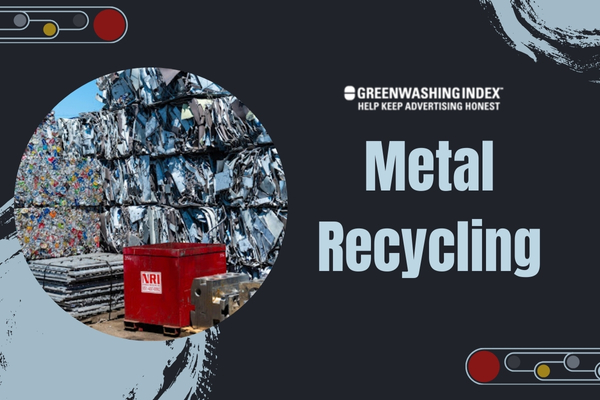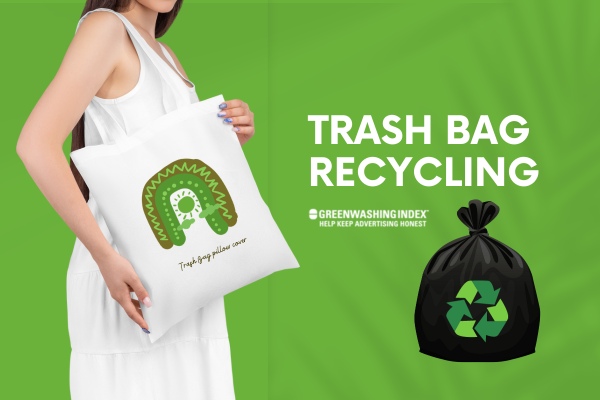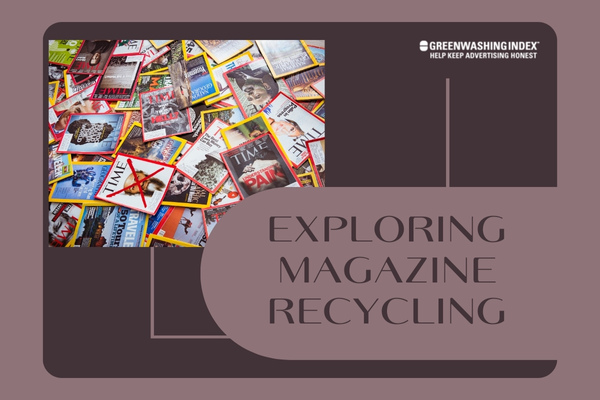Have you ever thought about the treasures hiding in old cans, broken tools, and discarded metal pieces? Metal recycling isn’t just a favor to Mother Earth; it’s like finding hidden gold in what others see as trash. Imagine turning those metal scraps into something valuable again. This magic is real, and I’m here to show you just how incredible it is.
Metal recycling is more than meets the eye. Think of it as a treasure hunt where every piece of scrap could be part of a jackpot. You’re not merely tossing old soda cans into a bin; you’re an important part of creating a sustainable future and giving new life to materials that never lose their worth. By embracing metal recycling, we dip into a well of resources that keeps on giving without depleting our planet’s precious raw materials.
Here’s What You’ll Learn!
- Dive into the world of metal recycling benefits
- Simple steps to start your own metal recycling journey
- How Recycled Metals Can Beef Up Your Economy
- Face the roadblocks in metal recycling and learn how to tackle them
- Embrace innovative methods for efficient precious metal recovery
The True Worth of Reclaimed Metals
When I talk about metal recycling, it feels like we’re discussing a secret treasure trove that many of us don’t even realize exists right under our noses.
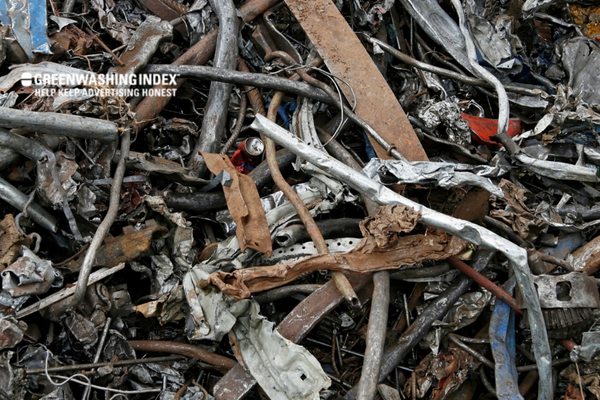
You see, this process is more than just taking old cans or car parts and turning them into something new. Metal recycling holds a remarkable power – it’s about creating value from what some might consider “trash” and, at the same time, doing good for our planet.
Now, let me peel back the layers on why these reclaimed metals are so important. When metals are recycled, they don’t lose their quality. That means the aluminum from soda cans could end up in airplanes; the iron from your old grill may become part of a road bridge one day. Metals keep their strength and usefulness no matter how many times they’re melted down and reshaped.
The economic upside to this is huge. Think about precious metals like gold or silver that pop up in electronics or jewelry. Recovering these through metal recycling can mean big savings because digging fresh metals out of the earth (what we call mining) takes a lot of work – and cash. Plus, harvested ores aren’t pure; they need processing to separate valuable materials from dirt and other minerals, which further jacks up costs.
But when we recycle? We skip all those steps! Recycled metal is already pure enough to use again straight away after being melted down, so companies save effort and resources by reusing it instead of creating new metal from scratch.
Handling waste smartly also helps our wallets by making sure products don’t cost as much as they might otherwise if manufacturers always used new raw materials for everything.
Environmentally speaking, metal recycling shines, too! It cuts down on greenhouse gases because producing recycled metal often uses less energy compared to extracting raw minerals. Moreover, imagine all that rock dug out for mining – heaps upon heaps – which isn’t pretty for Mother Earth’s face nor good for local wildlife habitats around mines.
Then there’s water pollution – not something you want with your morning coffee! When ores are processed chemically (think acid baths), nasty stuff can get into rivers unless carefully managed. But once again, with recycling, fewer chemicals needed equals cleaner waterways.
Let’s not forget either about landfill space – every bit of scrap kept out thanks to recycling centers means more room for nature rather than mounds of rusty engine parts!
And then there’s the circular economy idea: where products go round and round usefully instead of landing straight in trash dumps after one trip out-of-the-box—which means smart, sustainable resource management is actually happening before our eyes with each piece of recovered metal!
When I look at the scrap metal industry, I see a kind of gold mine hiding in plain sight – providing economic benefits while being kind to Earth without even trying hard! This isn’t just throwing around words; it’s real cash saved and real forests left standing thanks to something as simple as deciding not to toss those bottle caps or barbecue grills aside thoughtlessly.
“Metal recycling” doesn’t just make sense – it makes dollars and saves cents eco-wise, too—and if more folk understood this hidden value, maybe nobody would ever overlook such an incredible resource again.
Also Read: Aluminum Foil Recycling: Easy Guide to Eco-Friendly Practices
Step-by-Step Guide to Metal Recycling
Recycling metal is like discovering a treasure in items we might throw away. It’s a process that turns old and used metals into fresh, useful materials. This is important for our Earth because it helps save energy, reduces mining for new metals, and cuts down pollution. Let me explain how metal recycling works.
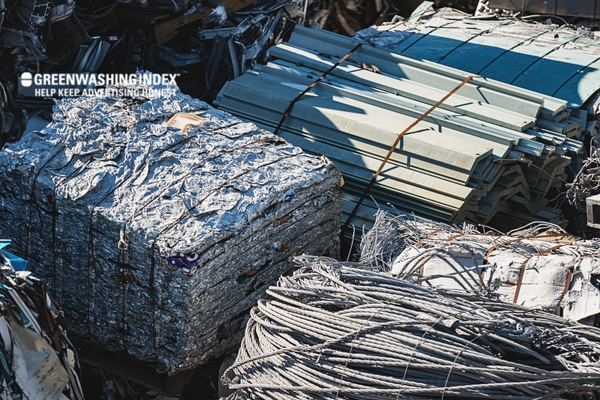
Understanding Metal Types and Sources
Identifying different types of metals:
First off, let’s talk about the kinds of metals you can recycle. Metals fall into two main categories: ferrous and non-ferrous.
Ferrous metals include iron and steel. They are common in things like cars, appliances, and construction materials. A quick tip to tell if something is ferrous is if a magnet sticks to it – that means it’s likely ferrous!
On the other hand, non-ferrous metals don’t have iron. These include copper, aluminum, brass, and more precious ones like gold and silver. These are often found in electrical wires, cans, kitchen foil – even jewelry.
Each type holds its value for recycling, but they must be separated because they go through different recycling processes.
Finding where these metals come from:
Metals can show up in daily items all around us! Here’s where you might find them:
- At Home: Look around your kitchen or garage for starters – aluminum cans from sodas or canned food; food packaging like foil; old tools or hardware; even broken electronics have recyclable metal.
- At Work: Offices often change out computers or machinery, which can be a good source of recyclable metal.
- In Communities: Scrap yards collect old cars that are basically big bundles of ferrous metals with valuable non-ferrous parts, too.
By paying attention to what items around us contain metal that could be recycled instead of thrown away as garbage – we participate in sustainable resource management!
Remembering the two main groups – ferrous (magnetic) and non-ferrous (non-magnetic) helps us know what can be recycled.
Next time, I’ll take you through how these collected metals get turned into shiny new resources ready to make stuff all over again! This cycle is part of what experts call the circular economy – where we aim to use things fully without waste! The environmental benefits of recycling are huge; every soda can you recycle saves energy needed to make new ones from ore dug up from the Earth.
Recycling is just smart living — keeping resources flowing within our communities while taking care of our planet.
Step 1: Collection & Sorting of Metals
Let me take you through the first step in metal recycling. Imagine you have a bunch of metal items at home – some soda cans, old tools, or maybe even a rusty bicycle frame. The journey for these items to become something new starts with collection and sorting.
First off, we gather metals from various places like homes, businesses, and factories. These are spots where metal waste piles up. Sometimes, special bins are set up in neighborhoods for folks to drop off their metal junk.
Next comes the sorting part; this is where things get a bit meticulous. You see, not all metals are the same. We have our everyday aluminum cans, copper wires from inside electronics, and even bits of precious metals like gold from old computer parts.
Sorting is kind of like organizing your clothes. You separate them by type – shirts with shirts and pants with pants. We do the same with metals: aluminum goes with aluminum, and steel goes with steel. Why do we sort? To make sure each type can be recycled properly without mixing them up.
Here’s how sorting usually works:
- Hand Sorting: As simple as it sounds – we manually pick out different types of metals.
- Magnets: These are great because they quickly pull out ferrous metals (the ones containing iron), such as steel.
- Sensors: For non-magnetic stuff like copper or aluminum, there are special sensors that can figure out which is which.
By now, the collected pile of scrap gets nicely organized into specific categories, ready for the next steps – cleaning and preparing them before they’re sent off to be made into something shiny and new again!
Step 2: Cleaning & Preparing Scrap Metal
Once we’ve got our different kinds of scrap sorted out neatly together like veggies in a grocery store bin – it’s time to clean them up so that nothing unwanted remains stuck on them before recycling.
The remnants left might be dirt from an old car piece or perhaps sticky residue from soda inside cans or label adhesives clinging desperately to survive. Here’s how we usually get rid of those pesky contaminants:
- Washing: Just like your dishes after dinner, they need soap and water; scraps also need a good wash sometimes.
- Detaching Non-metal Components: Many metal products have non-metal bits attached – think rubber on wires or glass in window frames.
- Sanding/Blasting: This is helpful when rust thinks it owns the right over an ancient piece of iron; sanding helps say ‘goodbye’ to that false claim.
Remember that cleaning not only helps remove dirt but also ensures no harmful chemicals sneak their way into our next batch of recycled materials – keeping everything safe for everyone!
Step 3: Shredding and Compacting
After gathering around all those cleaned, prettied-up scraps ready for their big transformation ball – they go through what I’d call ‘mental fitness.’ This involves cutting down size so they won’t gobble up much space (and energy!) during melting later on.
Shredding does exactly this:
- It breaks down pieces into smaller fragments
- Think tearing paper but more brutal
- Making chunks manageable
- Ensuring efficient melting
Compacting follows right after shredding’s over-the-top workout routine:
- Bales or blocks made
- Easy handling/storage
- Neat packaging
Between shredding, reducing volume (like chopping veggies finer so your stir-fry cooks evenly), and compacting, making portability (like packing a suitcase perfectly), they both ensure scraps don’t just land fit at conversion centers but also primped prim properly settled down in less room!
Step 4: Melting & Purification
When I talk about metal recycling, I think it’s important for folks to understand how it works. One of the main steps is melting and purifying the scrap metals. Let me break this down:
First, we have the scrap metal collected and sorted. What happens next? It all goes into a big furnace. This furnace is really hot, so hot that metals melt into a liquid form. You might be wondering why we do this. By melting them, we can shape them later into new things.
Now comes purification. This means we clean the melted metal so it’s good quality and free from impurities. How? Well, there are a few ways:
- Using Electricity: Electric currents help pull out the bad stuff from our liquid metal.
- Adding Chemicals: Sometimes, chemicals are mixed in that grab onto these impurities and take them away when removed.
- Stirring: Ever make soup and skim off the foam on top? It’s like that – moving molten metal around can bring impurities up to be removed.
All this makes sure when the melted metal cools down, it’s as pure as possible.
Step 5: Solidifying Recycled Metals
After all that heating and cleaning, you’d think our job with metal recycling is done, right? Not yet! There’s still solidifying recycled metals.
This step is like cooking but in reverse – if melting is heating up your meal in an oven until it’s bubbling hot, solidification is like letting your dish cool off so you can eat it without burning your mouth.
Here’s how we cool down molten metal:
- We pour the cleaned liquid metal into molds – these are special shapes that decide what form our final recycled product will be.
- The shapes could be bars if we want something standard or specific designs for different uses – like sheets for cars or beams for buildings.
- Once poured in, cooling begins, sometimes with air just sitting around or water to speed up the process.
- As they chill out, atoms inside start sticking together again – turning back from liquid to solid.
- When fully cooled down, they get turned out of their molds like ice cubes from an ice tray but are much heavier!
And just like that, those once discarded scraps are now recycled metals ready to be given a brand-new life!
Also Read: Tissue Paper Recycling: Yes or No? Find Out Now!
Maximizing Metal Recovery
When we talk about metal recycling, there’s a whole world of opportunities that might not be getting the attention they deserve. Getting the most out of metals isn’t just taking old soda cans to a bin; it’s about smart, fancy ways to pull out every last bit of value from what some people might see as trash.
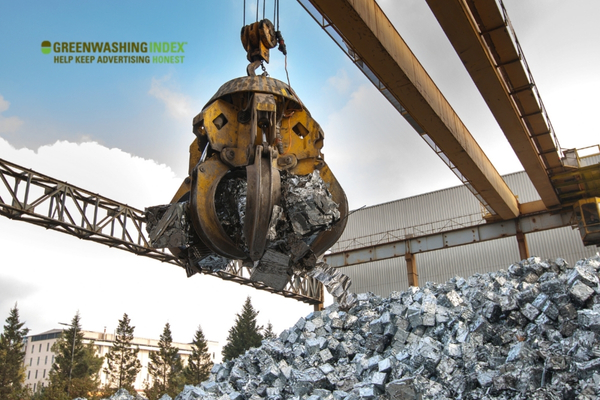
Innovative Techniques in Extracting Maximum Value
Now, let me dive into some super cool methods people are using to get as much metal out of stuff as possible:
- Hydrometallurgy: This is like making tea, but instead of tea leaves, you’re soaking ores and scrap in a chemical solution to get the metals to dissolve. Later on, with some more chemistry magic – boom! – you’ve got pure metal.
- Bioleaching: Sounds science-fiction, right? It sort of is. Imagine tiny microorganisms that eat away at rock and scrap metal and actually break down the crunchy bits that hold onto precious metals. These little bugs literally help us recycle more efficiently.
- Electrolysis: This method isn’t new, but stick with me here. By passing an electric current through a solution that has metals dissolved in it (remember hydrometallurgy?), we can coax those shy metals out of hiding and onto a collecting surface.
- Vibration separation: Shake things up – literally! When mixtures of materials get vibed on a table or through screens, they do this dance where heavier bits (like gold or lead) move differently than lighter ones (like aluminum), so you can split them up nicely.
- Laser sorting: A machine zaps each piece going down a conveyor belt with lasers – pew – and sensors make lightning-fast decisions about what kind of metal each piece is by how the light bounces back.
These are just some examples showing how folks are working hard behind the scenes to make sure we’re not missing out on any smidgen of worth from our scraps and old gizmos – turning them back into shiny new things for us all over again.
Also Read: Tupperware Recycling: Can You Really Recycle Them?
Economic Benefits of Expanding Metal Recycling Efforts
When we talk about metal recycling, I always think about how it’s like finding hidden treasure. We often overlook that our everyday metal trash can actually turn back into something valuable. And one of the best things about metal recycling is how it can help make our economy grow.
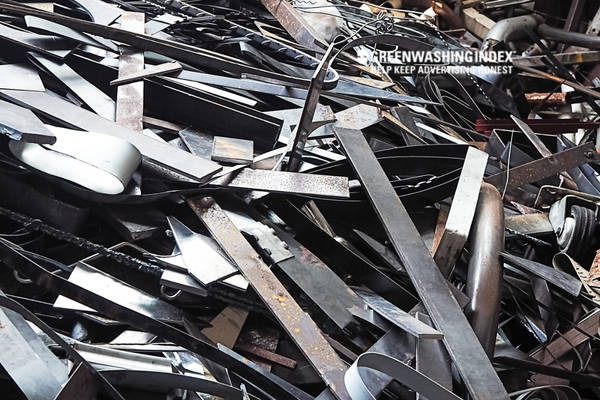
Boosting the Economy with Recycled Metals
You might wonder how recycling bits and pieces of metal helps the economy. Well, there are some pretty straightforward ways this happens.
For starters, when we recycle metals, we don’t need to dig up as much new material. Mining uses a lot of energy and can be bad for the environment. It’s also expensive. By going for recycled metals instead, companies save money on costs for energy, raw materials, and even waste disposal.
But here’s where it gets exciting:
- Local Jobs:
Metal recycling creates work for people right in our communities. From collecting scrap to processing and repurposing it – these steps all require human hands. More jobs mean more money for folks to spend on goods and services. - Less Dependence on Imports:
If a country doesn’t have enough of a certain type of metal in its own land, it usually buys from somewhere else. But if that country starts using more recycled metals, it won’t need to buy as much from abroad. This can lead to savings on import costs and less anxiety over supply problems. - Stimulating Innovation:
Recycling requires technology and know-how – which means there’s room for smart entrepreneurs to come up with new ideas or better machinery for processing metals. - Growing Businesses:
When businesses use recycled metals instead of new ones from mines, they often end up saving cash that they can then use to grow their operations or hire more workers. - Reducing Waste Management Costs:
Turning old metal stuff into new products means less trash piling up in landfills or needing expensive treatment.
Each time someone picks a soda can out of the trash or drops off old car parts at a scrap yard, they’re adding a tiny piece back into the economy machine—sorta like putting coins into a piggy bank; over time, it adds up!
So yes, by focusing on increased metal recycling efforts as part of sustainable resource management practices within what folks call the circular economy (think keeping stuff in use rather than throwing it away), we’re not just helping Mother Earth by reducing waste—we’re actually creating financial opportunities!
And let’s not forget about precious metal recovery. Some thrown-away gadgets contain little bits of gold or silver, which are hugely valuable resources when collected in large amounts through proper methods.
Also Read: Appliance Recycling Essentials: Master Eco-Friendly Disposal
Overcoming Challenges in the Metal Recycling Industry
When it comes to metal recycling, we’re talking about a process that’s not just good for the wallet but great for our planet, too. Turning old metal into something new is what metal recycling is all about. But as much as we champion this green practice, it’s not without its hurdles. Let’s dive into what’s standing in our way.
Addressing Roadblocks Hindering Our Progress
Metal recycling is like finding a hidden treasure right within our reach. It’s a process that gives old metals a new life. But, this goldmine faces some tough challenges. Let me tell you about the roadblocks we need to overcome to make metal recycling work even better.
Firstly, technology can be a big hurdle. Sometimes, we just don’t have the right tools or machines to sort and recycle metals in the best way. Imagine trying to dig for gold with a spoon – that’s how it feels when our technology isn’t up to scratch.
- Lack of Advanced Sorting Technology: Sorting different types of metal is super important in recycling. If we mix them up, they’re not as valuable. We need smart machines that can tell metals apart accurately. For an in-depth understanding of how vital material science is in addressing these technological challenges, check out this valuable resource: Material Science – Metal Recycling.
- Old or Outdated Recycling Equipment: Just like an old car struggles on the road, outdated recycling gear can slow us down or even stop us from getting all the precious metal out.
Policy issues are another big wall that we run into often.
- Unclear Recycling Regulations: It’s like playing a game without knowing all the rules – very confusing! Some places have clear rules about metal recycling; others don’t.
- Inconsistent Policies Across Regions: Think of it like this: if every soccer field had different rules, games would be chaotic! We need similar policies so everyone plays by the same book.
So, what’s stopping us from solving these problems?
Money is one thing – getting new machines and changing laws can cost a lot!
Also, people need to understand why this matters. If more folks knew about how great recycling is for our planet, maybe there’d be more push to fix these troubles.
So yeah, even though finding and using this hidden treasure of recycled metals seems simple enough at first glance – there are some serious challenges along the way!
FAQs
What are some common misconceptions about metal recycling?
Some folks think metal recycling doesn’t make much difference. But that’s not true. Each piece of recycled metal saves energy, cuts down pollution, and saves resources.
Is there a difference between ferrous and non-ferrous metal recycling?
Yes, there is. Ferrous metals have iron; they’re magnetic. Non-ferrous metals like copper or aluminum aren’t. They get sorted and recycled differently because of their distinct properties.
How does household participation affect overall success in recovery?
Households play a huge role! When everyone recycles at home, we gather more metal for recycling. This means less waste and more materials put back to good use.
Conclusion
As we look back at the journey of metal recycling, it becomes clear that it’s a process rich with opportunity. It’s like a hidden treasure waiting to be discovered. Every step, from collecting and sorting metals to the final act of solidifying recycled materials, contributes to a cleaner environment and offers economic benefits too significant to ignore.
The idea of sustainable resource management through metal recycling is not just environmentally responsible; it’s a smart business move as well. By embracing the concepts laid out in this article, communities, and industries can ensure precious metal recovery while fostering the growth of a circular economy.
Despite challenges, advancements in technology and processes are helping us get closer to maximizing recovery rates. Implementing innovative techniques can drastically improve the efficiency of this entire system.

